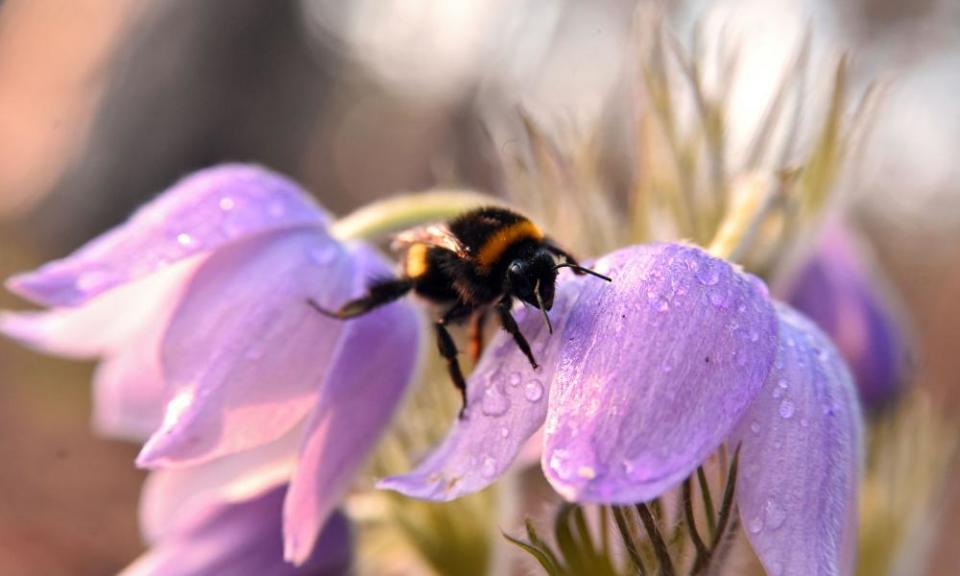Why soggy summers are bad news for bees

Southern England has had a dull and wet summer this year, with some areas experiencing 50% more rainfall than average, much of which fell in intense downpours, causing dramatic flash-flooding. Not only did it put a dampener on summer holidays and keep emergency services busy, but it also made life exceptionally hard for bees.
That’s because a sudden burst of rain hammering down on delicate petals can destroy flowers, leaving bees hungry. Writing in the Conversation, the entomologist Philip Donkersley explains how during a normal summer bee numbers increase through the year, taking advantage of the increasing number and diversity of blossoms available.
But an extended period of rain at the height of summer can wipe out many of the flowers; exactly at the point when bee colonies are largest. Smaller bees, such as honeybees, also struggle to fly in the rain, so rainy summers limit the amount of time they can spend foraging. And when bees struggle they are more likely to get sick.
Meteorologists anticipate that rainy summers will become more common and that means that robust plants, with flowers that can withstand rainfall, will become more important. Plants such as ivy, rose bay willow herb, dandelions, heather and lavender are worth encouraging, to keep bees in nectar, through even the soggiest of summers.

 Yahoo Finance
Yahoo Finance 